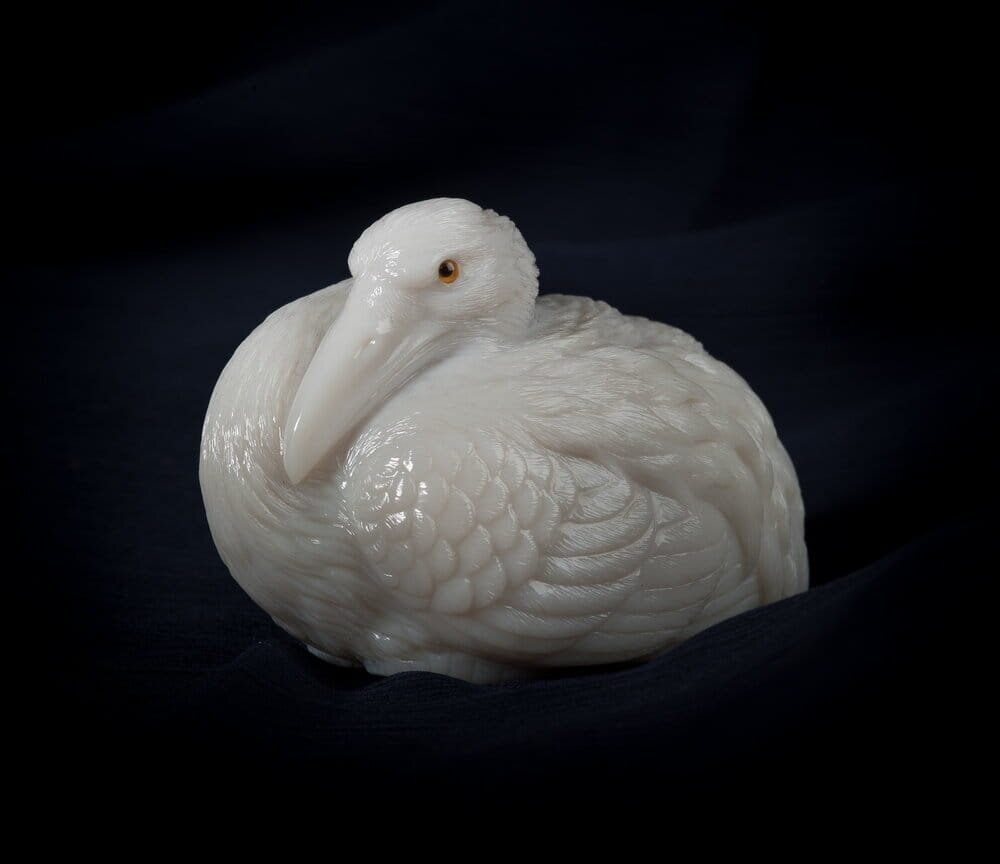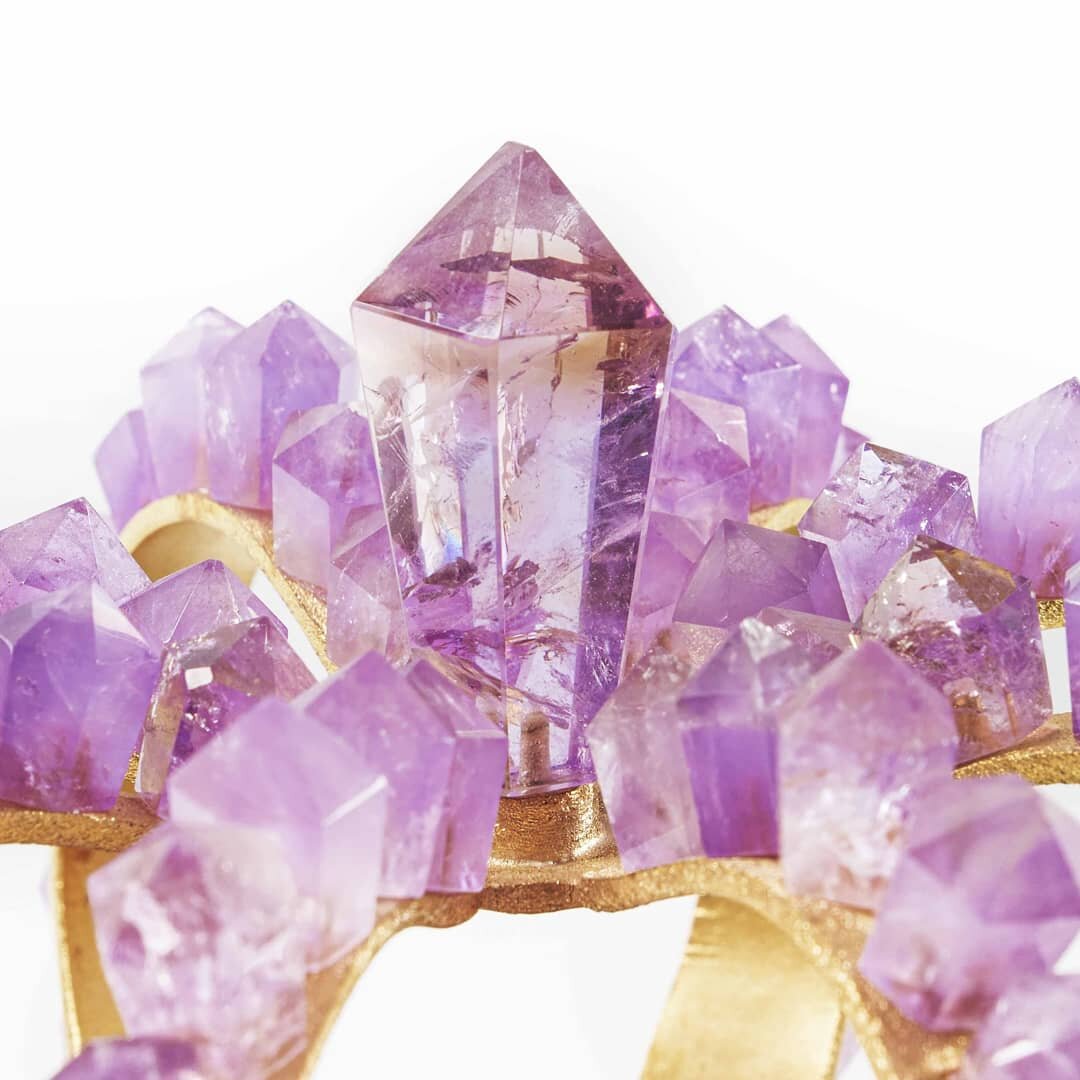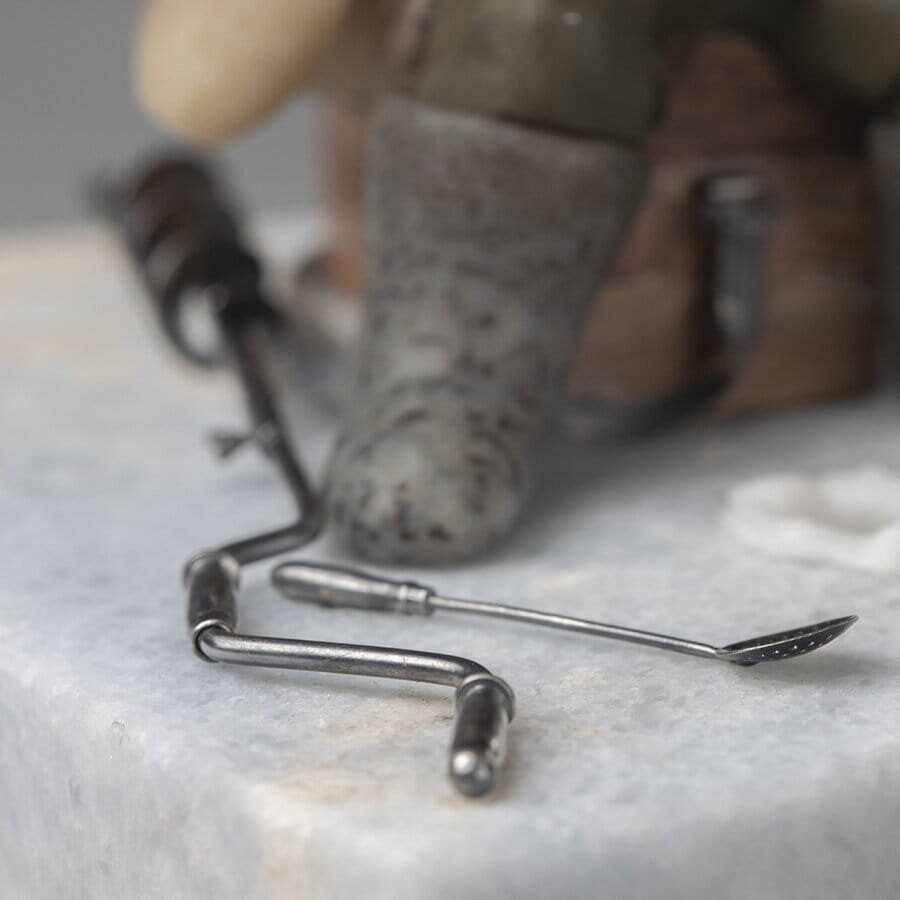 Image 1 of 3
Image 1 of 3

 Image 2 of 3
Image 2 of 3

 Image 3 of 3
Image 3 of 3




Gemstone carving - Ametrine rabbit by Gerd Dreher
Gemstone carving - Ametrine rabbit by Gerd Dreher
Dreher's is the fifth generation of gemstone carvers. The first family in the world in gemstone carving. In an instant, his carvings remind me of the work of Carl Faberge.
Gerd Dreher’s special carving skill, revealing a unique reflection of light.
He "draws" his chisel. And puts strength into shape. It is a touch of light and shadow, they protrude into a ridge or concave a depression, not to reflect a true ridge or dispersion. But to get a light shadow line in the gemstone carving. Painting is so poetic, and carving is more logical and scientific and makes you worry about gravity. His technique makes it possible to extract not only the anatomical structure of the animal, but also its inner state of animal emotions, or the symbol and means of spiritual experience to convey truth by concentrating its essence in a visible form. In this way, the inner emotion of carving the animal is expressed. It is the highest form of mastery. His carvings are found in world-class museums, including the Hermitage Museum in Saint Petersburg, the Museum of the American Gemological Institute (GIA) in California, and the German Museum in Idar Oberstein. His works are collected by collectors all over the world. And sold in auction houses in the US and Europe.
A little history:
Link between Faberge Royalty and Dreher's. In 1884 the Romanovs were so impressed with Faberges' work,that they gave it to him Goldsmith at the crown of the empire. This made him the most famous jeweler of the 19th and 20th centuries.
Carl Faberge from Romanov to Roalty
The 1800 Faberge will send Plaster models to Idar Oberstein.
The best gemstone carvers were commissioned to make carvings of gemstone. One such carver was
Hermann Dreher.
1908 Queen Alexander also began forming collections of Faberge animal carvings.
Her collection included more than 300 carvings, actually 3 times larger than formed by her sister in Russia.
Faberge pieces largely entered the collection as gifts exchanged by the Russian, Danish and British royal families.
Carl Fabergé owned a large collection of Japanese netsuke ( decorative pendants worn on men's kimonos ) which directly inspired his animal carvings collection. These small gem beasts, was from 5 from 10 cm high, with extraordinary detail. The quality of the carvings was impeccable. The little beasts had to please the eyes of the owners and evoke positive emotions.
1964 Paul Dreher worked at Faberge’s home.
Alfred Pocock LTD London.
Gerd Dreher gift for royalty.
1981 The first exclusive Drehers exhibition was held at the Dikker en Thijs Garden Hotel in Amsterdam.
This exhibition was opened during a special event dedicated to the Party
For Prince Bernhard of Lippe-Biesterfield.
Gerd Dreher presented one of his carvings to him as a special thank you to the Prince.
Patrick Dreher continues Faberges and his family traditions. To carve natural miniature carvings of wild nature. From Tourmaline, Citrine, Amatrin, Grossular Granate .... and other minerals. His sculptures, so real, seem to interact with the inveirament.
Materials :Natural untreated ametrine from Brazil
The eyes are bicolor agate
The dimensions of the rabbit are
Length: 6.9 cm
Width: 4.2 cm
Height: 4.6 cm
The weight 730 carat
Gemstone carving - Ametrine rabbit by Gerd Dreher
Dreher's is the fifth generation of gemstone carvers. The first family in the world in gemstone carving. In an instant, his carvings remind me of the work of Carl Faberge.
Gerd Dreher’s special carving skill, revealing a unique reflection of light.
He "draws" his chisel. And puts strength into shape. It is a touch of light and shadow, they protrude into a ridge or concave a depression, not to reflect a true ridge or dispersion. But to get a light shadow line in the gemstone carving. Painting is so poetic, and carving is more logical and scientific and makes you worry about gravity. His technique makes it possible to extract not only the anatomical structure of the animal, but also its inner state of animal emotions, or the symbol and means of spiritual experience to convey truth by concentrating its essence in a visible form. In this way, the inner emotion of carving the animal is expressed. It is the highest form of mastery. His carvings are found in world-class museums, including the Hermitage Museum in Saint Petersburg, the Museum of the American Gemological Institute (GIA) in California, and the German Museum in Idar Oberstein. His works are collected by collectors all over the world. And sold in auction houses in the US and Europe.
A little history:
Link between Faberge Royalty and Dreher's. In 1884 the Romanovs were so impressed with Faberges' work,that they gave it to him Goldsmith at the crown of the empire. This made him the most famous jeweler of the 19th and 20th centuries.
Carl Faberge from Romanov to Roalty
The 1800 Faberge will send Plaster models to Idar Oberstein.
The best gemstone carvers were commissioned to make carvings of gemstone. One such carver was
Hermann Dreher.
1908 Queen Alexander also began forming collections of Faberge animal carvings.
Her collection included more than 300 carvings, actually 3 times larger than formed by her sister in Russia.
Faberge pieces largely entered the collection as gifts exchanged by the Russian, Danish and British royal families.
Carl Fabergé owned a large collection of Japanese netsuke ( decorative pendants worn on men's kimonos ) which directly inspired his animal carvings collection. These small gem beasts, was from 5 from 10 cm high, with extraordinary detail. The quality of the carvings was impeccable. The little beasts had to please the eyes of the owners and evoke positive emotions.
1964 Paul Dreher worked at Faberge’s home.
Alfred Pocock LTD London.
Gerd Dreher gift for royalty.
1981 The first exclusive Drehers exhibition was held at the Dikker en Thijs Garden Hotel in Amsterdam.
This exhibition was opened during a special event dedicated to the Party
For Prince Bernhard of Lippe-Biesterfield.
Gerd Dreher presented one of his carvings to him as a special thank you to the Prince.
Patrick Dreher continues Faberges and his family traditions. To carve natural miniature carvings of wild nature. From Tourmaline, Citrine, Amatrin, Grossular Granate .... and other minerals. His sculptures, so real, seem to interact with the inveirament.
Materials :Natural untreated ametrine from Brazil
The eyes are bicolor agate
The dimensions of the rabbit are
Length: 6.9 cm
Width: 4.2 cm
Height: 4.6 cm
The weight 730 carat















